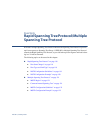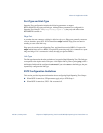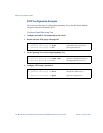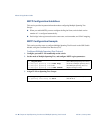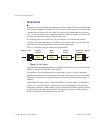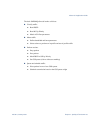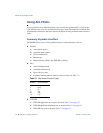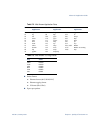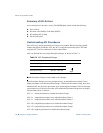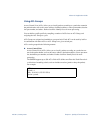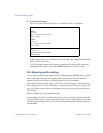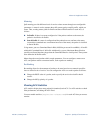
Alteon OS Application Guide
124
Chapter 7: Quality of Service 42C4911, January 2007
Overview
QoS helps you allocate guaranteed bandwidth to the critical applications, and limit bandwidth
for less critical applications. Applications such as video and voice must have a certain amount
of bandwidth to work correctly; using QoS, you can provide that bandwidth when necessary.
Also, you can put a high priority on applications that are sensitive to timing out or cannot toler-
ate delay by assigning that traffic to a high-priority queue.
By assigning QoS levels to traffic flows on your network, you can ensure that network
resources are allocated where they are needed most. QoS features allow you to prioritize net-
work traffic, thereby providing better service for selected applications.
Figure 7-1 shows the basic QoS model used by the GbESM.
Figure 7-1 QoS Model
The GbESM uses the Differentiated Services (DiffServ) architecture to provide QoS functions.
DiffServ is described in IETF RFCs 2474 and 2475.
With DiffServ, you can establish policies to direct traffic. A policy is a traffic-controlling
mechanism that monitors the characteristics of the traffic, (for example, its source, destination,
and protocol) and performs a controlling action on the traffic when certain characteristics are
matched.
The GbESM can classify traffic by reading the DiffServ Code Point (DSCP) or IEEE 802.1p
priority value, or by using filters to match specific criteria. When network traffic attributes
match those specified in a traffic pattern, the policy instructs the GbESM to perform specified
actions on each packet that passes through it. The packets are assigned to different Class of
Service (COS) queues and scheduled for transmission.
Ports
ACL
Filter
ACL
Meter
Drop/Pass/
Re-Mark
Classify
Packets
Perform
Actions
Egres
s
I
ngress
COS
Queue
Meter
Traffic
Queue and
Schedule




